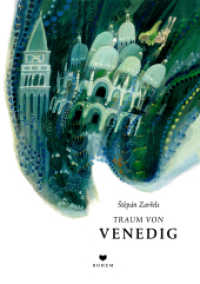- ホーム
- > 洋書
- > 英文書
- > Architecture
Full Description
During the 1920s, enterprising realtors, housing professionals, and builders developed the models that became the inspiration for the subdivision tract housing now commonplace in the U.S.
Originally published in 2001. Suburban subdivisions of individual family homes are so familiar a part of the American landscape that it is hard to imagine a time when they were not common in the U. S. The shift to large-scale speculative subdivisions is usually attributed to the period after World War II. In Entrepreneurial Vernacular: Developers' Subdivisions in the 1920s, Carolyn S. Loeb shows that the precedents for this change in single-family home design were the result of concerted efforts by entrepreneurial realtors and other housing professionals during the 1920s. In her discussion of the historical and structural forces that propelled this change, Loeb focuses on three typical speculative subdivisions of the 1920s and on the realtors, architects, and building-craftsmen who designed and constructed them. These examples highlight the "shared set of planning and design concerns" that animated realtors (whom Loeb sees as having played the "key role" in this process) and the network of housing experts with whom they associated. Decentralized and loosely coordinated, this network promoted home ownership through flexible strategies of design, planning, financing, and construction which the author describes as a new and "entrepreneurial" vernacular.
Contents
List of Illustrations
Acknowledgments
Introduction. The Entrepreneurial Vernacular Subdivision
Part I. Three Subdivisions and Their Builders
Chapter 1: The Ford Homes: The Case of the Borrowed Builders
Chapter 2: Brightmoor: The Case of the Absent Architect
Chapter 3: Westwood Highlands: The Rise of the Realtor
Part II. Agency, From, and Meaning
Chapter 4: The Home-Ownership Network: Constructing Community
Chapter 5: Architectural Style: The Charm of Continuity
Conclusion. Architecture as Social Process
Notes
Bibliographical Note
Illustration Credits
Index








